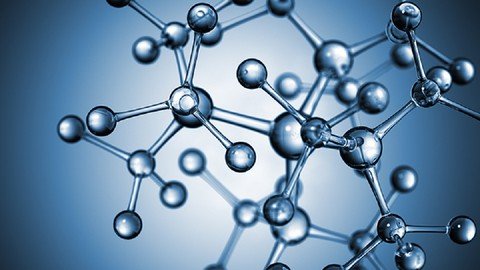D
Devpoint.one
Guest
Offline

Free Download Material Science And Engineering (Ese Gs)
Last updated 8/2021
MP4 | Video: h264, 1280x720 | Audio: AAC, 44.1 KHz
Language: English | Size: 10.89 GB | Duration: 22h 33m
Materials science, the study of the properties of solid materials and how those properties are determined by a material'
Free Download What you'll learn
CRYSTAL STRUCTURES AND DEFECTS
CONDUCTING MATERIALS
CERAMICS
NANO MATERIALS
POLYMER,
DIELECTRIC MATERIALS
MAGNETIC MATERIALS
IRON-CARBON DAIGRAM AND STEEL ALLOYS
NON DESTRUCTIVE TESTING METHODS
MATERIAL PROPERTIES AND TESTING
COMPOSITE MATERIALS
Requirements
ENGLISH LANGUAGE
Description
Materials science: THIS COURSE ESPECIALLY FOR ESE GENERAL STUDIES AND UNIVERSITY GOING ENGINEERING STUDENTS AS PER SYLLABUS EACH AND EVERY TOPIC COMPLETED IN DEPTH , the study of the properties of solid materials and how those properties are determined by a material's composition and structure. The many materials studied and applied in materials science are usually divided into four categories: metals, polymers, semiconductors, and ceramics.what you will learn here:1.Crystal structures and defects2.conducting materials3.Dielectric materials4.Magnetic Materials5.Iron-carbon diagram and steel alloys6.Material properties and testing7.Non Destructive testing methods8.Nano materials9.composite materials10.ceramics11.PolymersThe interdisciplinary field of materials science, also commonly termed materials science and engineering, covers the design and discovery of new materials, particularly solids. The intellectual origins of materials science stem from the Enlightenment, when researchers began to use analytical thinking from chemistry, physics, and engineering to understand ancient, phenomenological observations in metallurgy and mineralogy.[1][2] Materials science still incorporates elements of physics, chemistry, and engineering. As such, the field was long considered by academic institutions as a sub-field of these related fields. Beginning in the 1940s, materials science began to be more widely recognized as a specific and distinct field of science and engineering, and major technical universities around the world created dedicated schools for its study.Materials scientists emphasize understanding, how the history of a material (processing) influences its structure, and thus the material's properties and performance. The understanding of processing-structure-properties relationships is called the materials paradigm. This paradigm is used to advance understanding in a variety of research areas, including nanotechnology, biomaterials, and metallurgy.Materials science is also an important part of forensic engineering and failure analysis – investigating materials, products, structures or components, which fail or do not function as intended, causing personal injury or damage to property. Such investigations are key to understanding, for example, the causes of various aviation accidents and incidents
Overview
Section 1: Conducting materials
Lecture 1 1.Conducting materials Part 1
Lecture 2 Conducting materials part-2
Lecture 3 Conducting materials part-3
Lecture 4 Conducting materials part-4
Section 2: Dielectric materials
Lecture 5 Dielectric materials part 1
Lecture 6 Dielectric materials part 2
Lecture 7 Dielectric materials part 3
Section 3: Material property and Testing
Lecture 8 Material properties and Testing part 1
Lecture 9 Material properties and Testing part 2
Lecture 10 Material properties and Testing part 3
Section 4: Ceramics
Lecture 11 Ceramics part 1
Lecture 12 Ceramics part 2
Lecture 13 Ceramics part 3
Section 5: Basics of Material science
Lecture 14 Basics of Material science part 1
Lecture 15 Basics of Material science part 2
Lecture 16 Basics of Material science part 3
Lecture 17 Basics of Material science part 4
Lecture 18 Basics of Material science part 5
Section 6: Nano material
Lecture 19 Nano material
Section 7: Non Destructive Testing
Lecture 20 Non Destructive Testing
Section 8: Magnetic Materials
Lecture 21 Magnetic Materials part 1
Lecture 22 Magnetic Materials part 2
Lecture 23 Magnetic Materials part 3
Section 9: Polymers
Lecture 24 Addition polymerisation
Lecture 25 Condensation polymerisation,Homopolymer,Coplymer , types of polymers1
Lecture 26 Thermoplastic polymer
Lecture 27 Thermosetting polymer
Lecture 28 Linear,Branched,cross(3D) linked polymer
Lecture 29 Degree of polymerisation ,Glass transition temperature
Lecture 30 Elastomers & Vulcanization process
Section 10: Composite materials
Lecture 31 Composite materials
Section 11: Iron-Carbon Diagram and steel Alloys
Lecture 32 Fe-C Diagram and Steel Alloys Part 1
Lecture 33 Fe-C Diagram and Steel Alloys Part 2
Lecture 34 Fe-C Diagram and Steel Alloys Part 3
Lecture 35 Fe-C Diagram and Steel Alloys Part 4
FOR ESE GENERAL STUDIES AND ENGINEERING STUDENT
Homepage
https://www.udemy.com/course/material-science-ese-gs/Rapidgator
Uploadgig
NitroFlare
Links are Interchangeable - Single Extraction